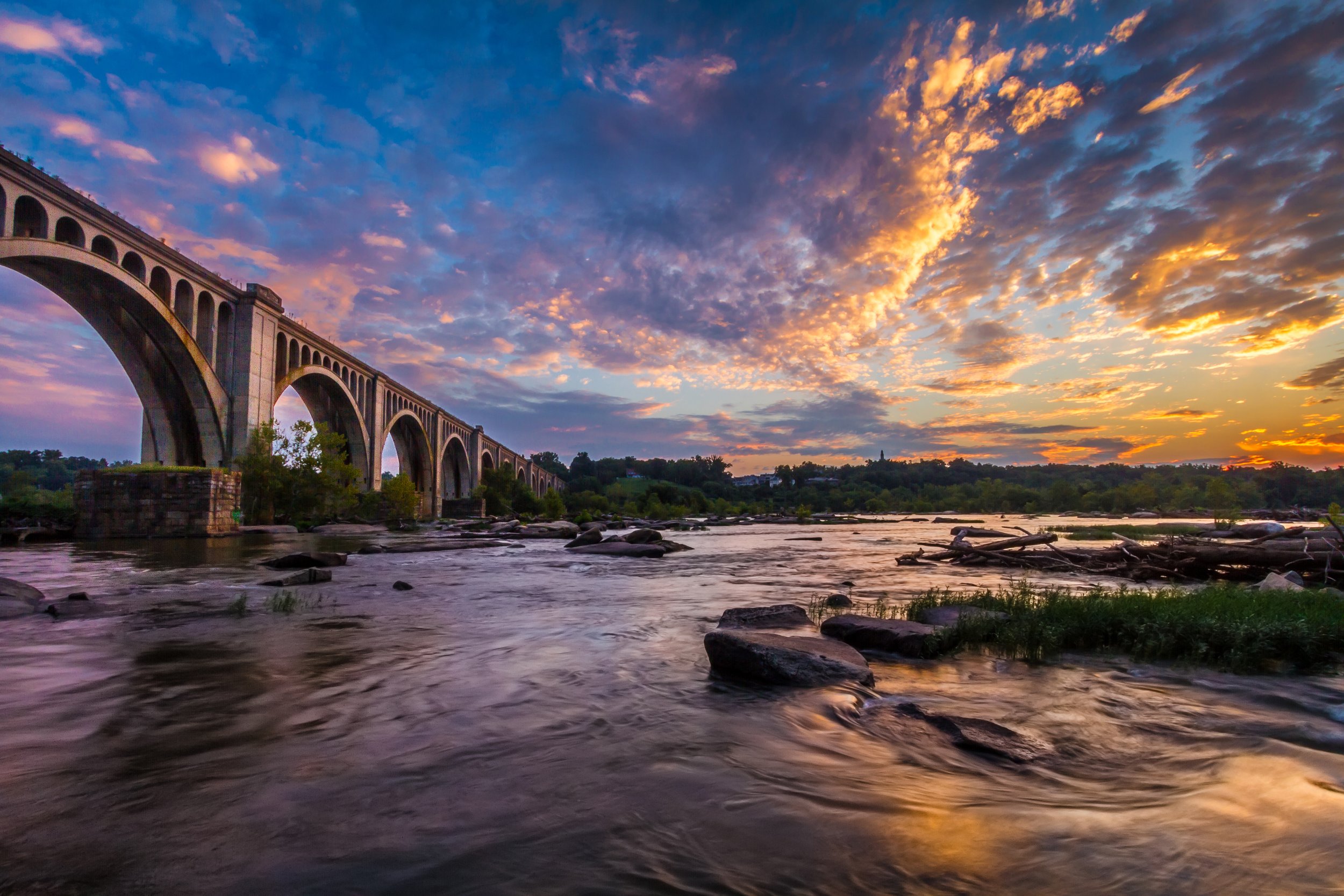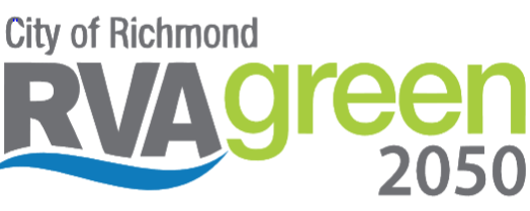
Environment
Invest in resilient, healthy, and equitably distributed natural resources throughout the community to support biodiversity and human well-being.
The Richmond 300 Master Plan sets a vision for Richmond’s Thriving Environment:
Richmond is a sustainable and resilient city with healthy air, clean water, and a flourishing ecosystem. Carbon emissions are low, air and water quality are high, and city-wide solid waste production is minimal. The City is positively adapting to the effects of a changing climate, with a built environment that enhances and protects natural assets, including the James River. All residents have equitable access to nature and a healthy community.
The natural environment plays a critical role in achieving the goals of the Master Plan as well as this 2030 Action Plan, both in terms of equitably reducing greenhouse gas emissions and enhancing the community’s resilience to climate change, as well as protecting the natural environment itself from the impacts of climate change so that Richmond’s human, animal, and plant life are safe and healthy for years to come.
The strategies and actions in this Pathway aim to provide more equitable access to healthy natural spaces, protect the natural environment from the impacts of climate change, and engage the natural environment to decrease greenhouse gas emissions and increase resilience to the impacts of climate change.
Accomplishing these strategies will create co-benefits including more beautiful neighborhoods, protecting human health, and creating pathways to green jobs.
Impervious surfaces - those that are paved or hardened and do not allow water to infiltrate, such as roads, rooftops, and sidewalks - make up 36% of Richmond’s land. This means that a significant portion of Richmond’s 62.5 square miles is more prone to hotter temperatures during heat waves and increased stormwater runoff during extreme storms.
Slightly over 40% of the city is covered by tree canopy (compared to the national average of 27%), but it is not evenly distributed throughout Richmond. The same neighborhoods where there is less tree cover and more impervious surface are also often where there are more residents of color, lowerincome households, and more people with underlying health conditions that make them more vulnerable to harm from the local impacts of climate change.
Environment Objectives and Strategies
ENV-1.1: Green Space Management: Create a program and public-private partnerships to maintain and expand high-quality public green space.
ENV-1: Make sure all residents have the opportunity to engage with healthy natural resources, spaces, and biodiversity.
ENV-1.2: Parks Master Plan: Support the development, funding, and implementation of a Parks Master Plan.
ENV-2: Reduce risks and impacts to the community and natural environment from extreme heat and drought.
ENV-1.3: Urban & Community Agriculture: Develop, fund, and implement an urban and community agriculture program.
ENV-2.1: Urban Heat Island Reduction: Develop, fund, and implement an urban heat island reduction plan and program.
ENV-2.2: Urban Forest and Green Space Planning: Use urban forest and green space planning to increase climate resilience.
ENV-3: Reduce risks and impacts to the community and natural environment from extreme precipitation and flooding.
ENV-3.1: Neighborhood Prioritization: Identify and prioritize extreme precipitation and flooding projects using community engagement and data.
ENV-3.2: Extreme Precipitation Resilience Planning and Operations: Increase planning and capacity for green infrastructure management and flood resilience measures.
ENV-3.3: Land Management Practices: Enhance land management practices to increase capacity for flood resilience measures.
ENV-4: Engage the natural environment to improve air quality and reduce greenhouse gas emissions.
ENV-4.1: Carbon Sequestration: Implement equitable carbon farming, sequestration, and removal.






